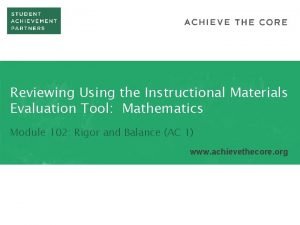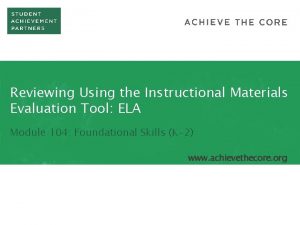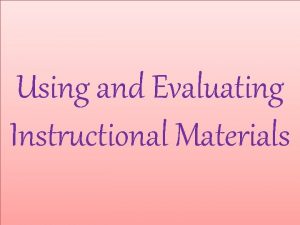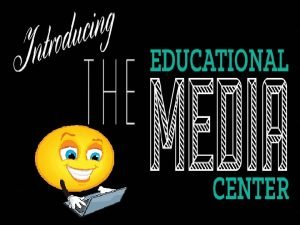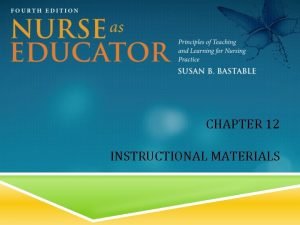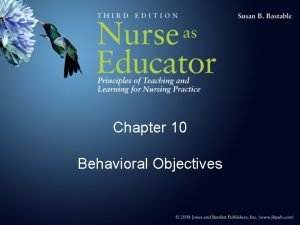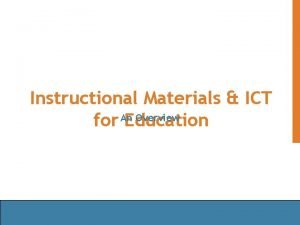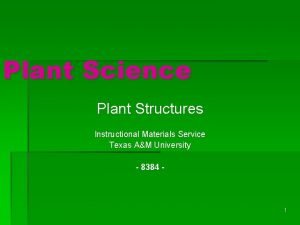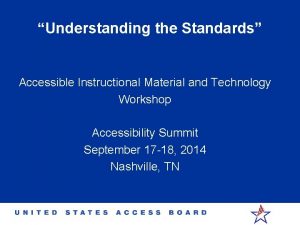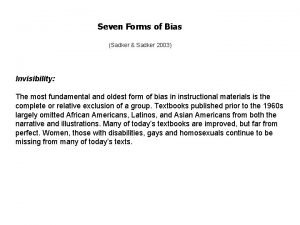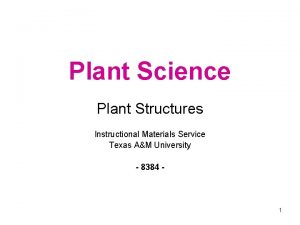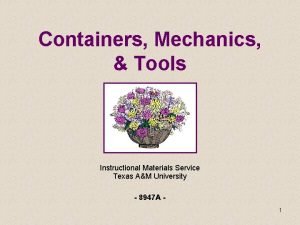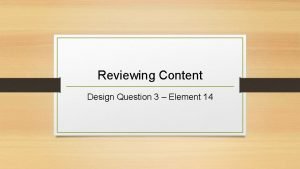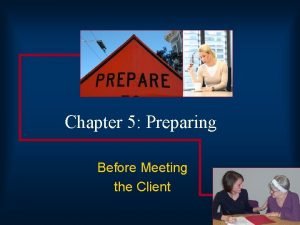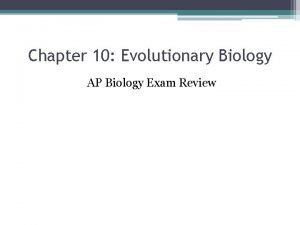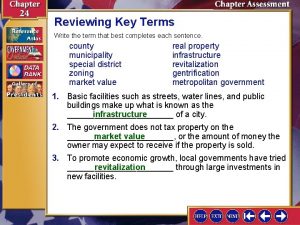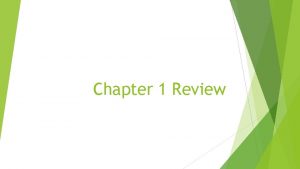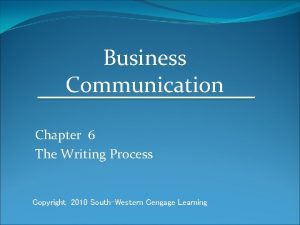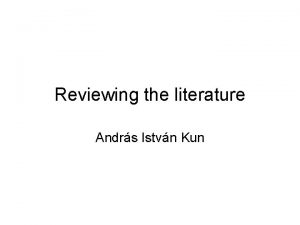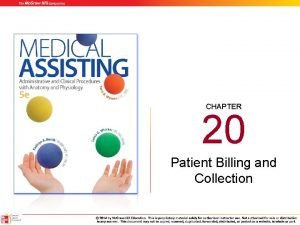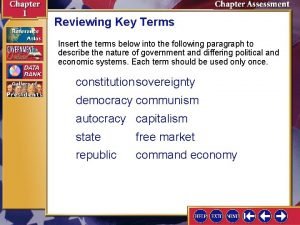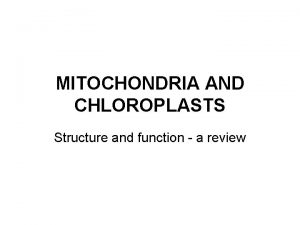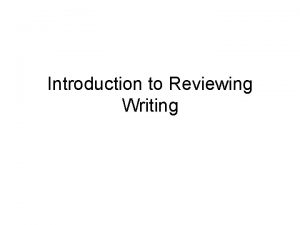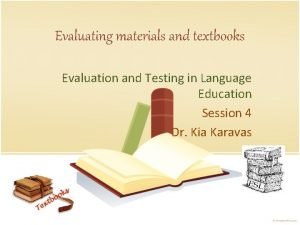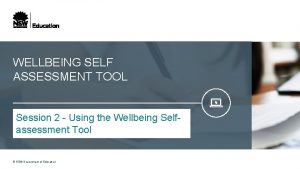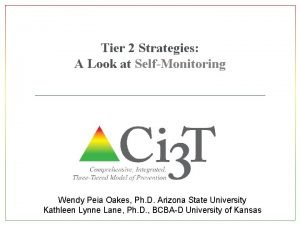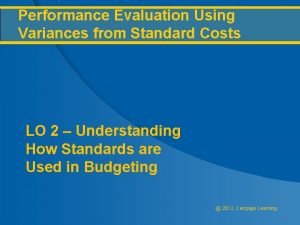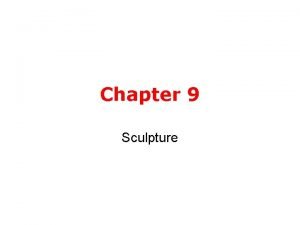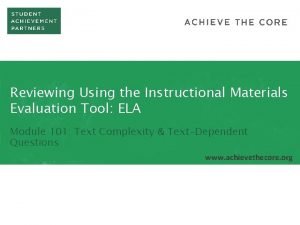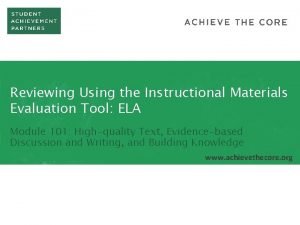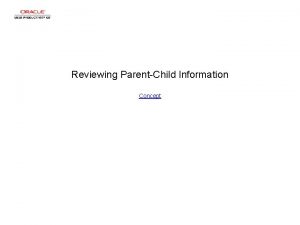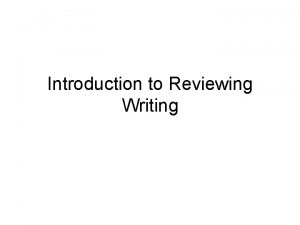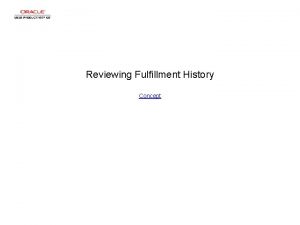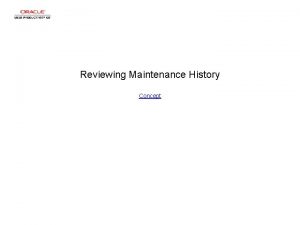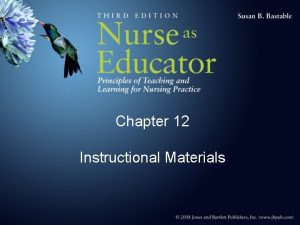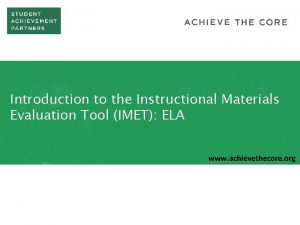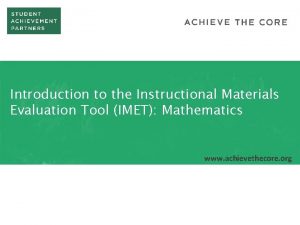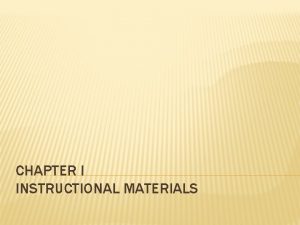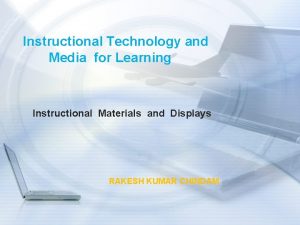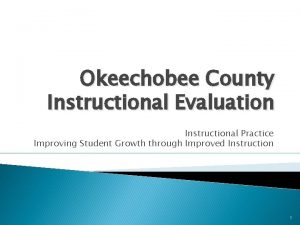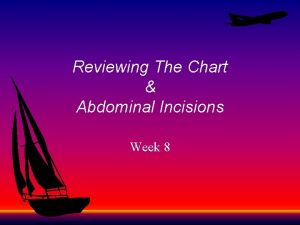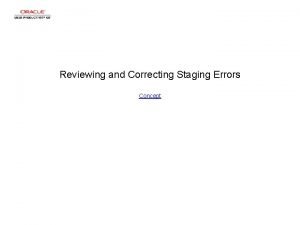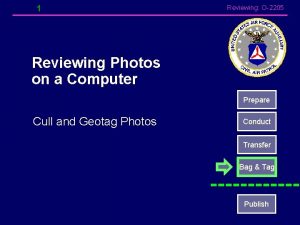Reviewing Using the Instructional Materials Evaluation Tool ELA


















































- Slides: 50

Reviewing Using the Instructional Materials Evaluation Tool: ELA Module 103: Building Knowledge www. achievethecore. org

Essential Questions • How does the Instructional Materials Evaluation Tool (IMET) reflect the major features of the Standards and the Shifts? • What understandings support high-quality, accurate application of the IMET metrics? PAGE 2

Goals • Understand how aligned materials embody the shifts inherent in the Common Core State Standards • Understand the precise meaning of each metric • Recognize examples and non-examples related to each IMET criteria metric PAGE 3

The quality of instructional materials in our classrooms has a large impact on student learning. “There is strong evidence that the choice of instructional materials has large effects on student learning – effects that rival in size those that are associated with differences in teacher effectiveness. ” Chingos & Whitehurst, Choosing Blindly: Instructional Materials, Teacher Effectiveness, and the Common Core PAGE 4

Agenda Module 103: • Non-Negotiable 3: Building Knowledge • Alignment Criterion 3: Building Knowledge with Texts, Vocabulary, and Tasks • Alignment Criterion 4: Access to the Standards for All Students PAGE 5

Norms for Our Work • Consider two norms you’d like to see us adhere to for the next two days. • Discuss your thoughts with your shoulder partner. • Be ready to share. PAGE 6

Non-Negotiable 3: Building Knowledge

Building Knowledge Non-Negotiable 3: Materials build knowledge systematically through reading, writing, speaking and listening, and language study. • Metric 3 A: Materials provide a sequence or series of texts that build knowledge and vocabulary systematically through reading, writing, listening, and speaking. These texts are organized around a variety of topics at each grade level. • Metric 3 B: Materials provide instructions, clear design and lightweight student accountability, that guide instructors regarding how students will regularly engage in a volume of independent reading, both assigned, related to the anchor texts, or texts of their own choosing, in or outside of class. IMET p. 13 PAGE 8

Building Knowledge Metric 3 A: Materials provide a sequence or series of texts that build knowledge and vocabulary systematically through reading, writing, listening, and speaking. These texts are organized around a variety of topics at each grade level. “By reading texts in history/social studies, science, and other disciplines, students build a foundation of knowledge in these fields that will also give them the background to be better readers in all content areas. Students can only gain this foundation when the curriculum is intentionally and coherently structured to develop rich content knowledge within and across grades. ” -- CCSS Anchor Reading Standards IMET p. 14 PAGE 9

Building Knowledge PAGE 10

Building Knowledge Example PAGE 11

Building Knowledge Metric 3 B: Materials provide instructions, clear design and lightweight student accountability, that guide instructors regarding how students will regularly engage in a volume of independent reading, both assigned, related to the anchor texts, or texts of their own choosing, in or outside of class. Close reading alone is NOT enough! In fact, done alone, it can INCREASE the achievement gap. IMET p. 15 PAGE 12

Building Knowledge A volume of reading should be balanced with the close analytic reading. Close Reading Volume of Reading Fewer pages More pages Grade-level complex text Text at different levels of complexity All students same text Student or teacher choice of text Teaches students to attend to text and to words Rapidly builds knowledge & vocab Heavy support Light support Solely instructional Guided or independent Exposes students to higher level content Builds knowledge of words, and the world Gives all students access Builds love of reading PAGE 13

Building Knowledge Independent Reading PAGE 14

Alignment Criterion 3: Building Knowledge with Texts, Vocabulary, and Tasks

Building Knowledge with Texts, Vocabulary, and Tasks Alignment Criterion 3: Building Knowledge with Texts, Vocabulary and Tasks: Materials build students’ knowledge across topics and content areas. • AC Metric 3 A: Materials regularly ask students to complete culminating tasks in which they demonstrate their knowledge of a topic. Example Non-Example • AC Metric 3 B: Materials require students to engage in many short, focused research projects annually to develop students’ knowledge in a range of areas and to enable students to develop the expertise needed to conduct research independently. • AC Metric 3 C: Materials include a cohesive, year-long plan for students to interact with and build academic IMET p. 31 vocabulary. PAGE 16

Building Knowledge with Texts, Vocabulary, and Tasks Alignment Criterion 3 A: Materials regularly ask students to complete culminating tasks in which they demonstrate their knowledge of a topic. What will students say if you ask: “What did you learn from the reading and study we’ve done? ” IMET p. 32 PAGE 17

Building Knowledge with Texts, Vocabulary, and Tasks Building Knowledge: Example or Non-example? PAGE 18

Building Knowledge with Texts, Vocabulary, and Tasks Building Knowledge: Example PAGE 19

Building Knowledge with Texts, Vocabulary, and Tasks Alignment Criterion 3 B: Materials require students to engage in many short, focused research projects annually to develop students’ knowledge in a range of areas and to enable students to develop the expertise needed to conduct research independently. • • CCSS Research: Standards 7, 8, 9, 10 Research = inquiry Time to complete? Short Spot check for inclusion IMET p. 33 PAGE 20

Building Knowledge with Texts, Vocabulary, and Tasks Research: Example or Non-example? PAGE 21

Building Knowledge with Texts, Vocabulary, and Tasks Research: Example or Non-example? PAGE 22

Building Knowledge with Texts, Vocabulary, and Tasks Alignment Criterion Metric 3 C: Materials include a cohesive, year-long plan for students to interact with and build academic vocabulary. Importance of Vocabulary • Nearly a century of research (Whipple 1925, NAEP 2012) • Feature of complex text that likely causes greatest difficulty (Nelson et al 2012) • Having to determine the meaning of too many words slows readers up; problem gets much worse with complex text. • Not knowing words on the page is debilitating. • “ 30 Million Word Gap” • After much research… IMET p. 34 PAGE 23

Building Knowledge with Texts, Vocabulary, and Tasks Example With prompting, scaffolding, and support, the students will review the series of pictures and text to determine how water was important to early Asian civilizations. After reviewing the documents, students will write to the prompt independently. Helpful Vocabulary: fertile irrigation canals Indus River trade cultivate sacred Yangtze River transport source Hinduism Yellow River Himalayan Mountains Writing Task: Using evidence found the in the following documents, your knowledge of our readings, and at least four of the vocabulary words above, please describe how water was important to early Asian civilizations. PAGE 24

Building Knowledge with Texts, Vocabulary, and Tasks Example. PAGE 25

Alignment Criterion 4: Access to the Standards for All Students

Access for All Students Alignment Criterion 4: Materials are designed to provide thoughtful supports/scaffolds to support all students in accessing the Standards. • AC Metric 4 A: Content can be completed in a school year • AC Metric 4 B: Materials support ELLS and students reading below grade level • AC Metric 4 C: Materials include extension opportunities Example Non-Example • AC Metric 4 D: Materials include adaptations/ remediation strategies • AC Metric 4 E: Materials include systematic assessment IMET p. 36 PAGE 27

Access for All Students As Noted in the IMET: Because the Standards are for all students, evaluation requires that careful attention be paid to ensure that all students, including English Language Learners and those with different learning needs, have access to high-quality, aligned materials. The IMET is designed primarily to help educators determine whether instructional materials are aligned to the Shifts and major features of the CCSS. The IMET also allows room for local considerations to ensure that selected materials provide access for the specific set of students who will be using those materials. IMET p. 36 PAGE 28

Access for All Students A wide range of components without time allotments or scheduling guidance…. Common Core “inserts” or add-ons… More tasks than can reasonably be completed with students… Moving to… Moving from… Alignment Criterion 4 A: Teachers and students can reasonably complete the core content within a regular school year to maximize students’ learning. Clear instructions on when to use specified materials… Built in tasks that are aligned and part of the core lesson… Reasonable time allotments that allow for discussion and task completion… IMET p. 37 PAGE 29

Access for All Students PAGE 30

Access for All Students Example PAGE 31

Access for All Students Providing a simpler text Changing the content to speaking tasks Excusing students from the assignment… Moving to… Moving from… Alignment Criterion 4 B: Materials regularly provide all students, including those who read, write, speak, or listen below grade level, or whose first language is other than English, with extensive opportunities to work with and meet grade-level standards. Supporting access to grade level texts Providing models or frames to help students practice higher level writing… Provide practice opportunities for speaking and listening with peers… IMET p. 38 PAGE 32

Access for All Students Example PAGE 33

Access for All Students Adapting instruction for varying needs: Example or Non-example? PAGE 34

Access for All Students Alignment Criterion 4 C: Materials regularly include extensions and/or more advanced opportunities for students who read, write, speak, or listen above grade level. Basic Characteristics of Enrichment Learning · Student and teacher select a topic which may be an off-shoot of the regular curriculum or an independent topic based on the student’s interest. · Student produces a product, project, and/or service that is intended to have an impact on a particular audience. · Student uses authentic methods, technological resources, and advanced level content to produce the product or service. IMET p. 39 PAGE 35

Access for All Students Example PAGE 36

Access for All Students Alignment Criteria 4 B and 4 C: Example PAGE 37

Access for All Students Alignment Criterion 4 D: Materials regularly and systematically build in the time, resources, and suggestions required for adapting instruction to allow teachers to guide all students to meet grade-level standards (e. g. , alternative teaching approaches, pacing, instructional delivery options, suggestions for addressing common student difficulties, remediation strategies). IMET p. 40 PAGE 38

Access for All Students Alignment Criterion 4 D Example PAGE 39

Access for All Students PAGE 40

Access for All Students Example or Non -example? PAGE 41

Access for All Students Optional: • In your handout packet on page 24, find the Vermont Writing Collaborative Darwin Germany lesson on habits of mind. • Look over the lesson plan and discuss how this lesson is an example of alignment for AC 4 D. IMET p. 40 PAGE 42

Access for All Students Alignment Criterion 4 E: Materials regularly and systematically offer assessment opportunities that genuinely measure progress on reading comprehension and writing proficiency as well as on mastery of grade level standards. This progress includes gradual release of supporting scaffolds for students to measure their independent abilities. • Formative, interim, and summative assessments • Aligned to the requirements of the grade-level standards • Reflect the balance of text and writing types IMET p. 41 PAGE 43

Access for All Students Focus and Coherence in Instruction and Assessment “While the Standards delineate specific expectations in reading, writing, speaking, listening, and language, each standard need not be a separate focus for instruction and assessment. Often, several standards can be addressed by a single rich task. ” --Common Core State Standards, Key Design Considerations PAGE 44

Access for All Students Bottom Line for Reading for Standards Questions are… • based on texts that are of appropriate complexity. They are worthy of students’ attention! (Standard 10) Questions require… • students to read closely and think deeply about key ideas and specifics of the texts. They are questions worth answering! • students to use textual evidence to help them formulate their responses. They help prepare students for the demands of careers and college! (Standard 1) PAGE 45

Access for All Students should demonstrate “mastery” of the Standards through tasks that require deep understanding of the text under consideration. PAGE 46

Access for All Students Do assessments genuinely measure progress? If questions linger around assessment, check out these sources! Assessment Alignment EQu. IP Rubric PAGE 47

Rating: Non-Negotiable vs. Alignment Criteria Non- Negotiable Criteria Alignment Criteria Each metric rated Meets/Does Not Meet Each metric rated Meets (2 pts)/ Partially Meets (1 pt)/Does Not Meet (0) Every metric must be met to rate the criterion as Meets Must receive a specific number of points out of the total to rate the criterion as Meets Why? Standard 10 and Standard 1 PAGE 48

Essential Questions • How does the Instructional Materials Evaluation Tool (IMET) reflect the major features of the Standards and the Shifts? • What understandings support high-quality, accurate application of the IMET metrics? PAGE 49

Goals • Understand how aligned materials embody the shifts inherent in the Common Core State Standards • Understand the precise meaning of each metric • Recognize examples and non-examples related to each IMET criteria metric PAGE 50
 Instructional materials evaluation tool
Instructional materials evaluation tool Evaluation tool for instructional materials
Evaluation tool for instructional materials Hayden smith and thomas nagel
Hayden smith and thomas nagel Educational media meaning
Educational media meaning Visual instructional materials
Visual instructional materials Still projected display materials
Still projected display materials Technique definition
Technique definition Instructional materials in araling panlipunan
Instructional materials in araling panlipunan Instructional materials in ict
Instructional materials in ict Instructional materials service
Instructional materials service Examples of accessible instructional materials
Examples of accessible instructional materials Seven forms of bias
Seven forms of bias Parts of flower
Parts of flower Types of instructional materials
Types of instructional materials Instructional materials service
Instructional materials service Chapter 5 section 3 the minor parties answer key
Chapter 5 section 3 the minor parties answer key Reviewing content
Reviewing content Preparatory exploring social work
Preparatory exploring social work Reviewing key concepts reproductive barriers
Reviewing key concepts reproductive barriers Reviewing key terms
Reviewing key terms Reviewing concepts and vocabulary chapter 1
Reviewing concepts and vocabulary chapter 1 Business communication chapter 6
Business communication chapter 6 Febabook
Febabook Chapter 20 patient collections and financial management
Chapter 20 patient collections and financial management Section 4 flatworms mollusks and annelids
Section 4 flatworms mollusks and annelids Reviewing key terms
Reviewing key terms Reviewing key concepts: chloroplasts and mitochondria
Reviewing key concepts: chloroplasts and mitochondria What is reviewing
What is reviewing Steps of textbook evaluation
Steps of textbook evaluation Go noodle cant stop the feeling
Go noodle cant stop the feeling The useful
The useful Man made map
Man made map Differentiate adopting materials and adapting materials
Differentiate adopting materials and adapting materials Direct materials budget with multiple materials
Direct materials budget with multiple materials Wellbeing framework self assessment tool
Wellbeing framework self assessment tool Monitoring and evaluation tool sample deped
Monitoring and evaluation tool sample deped Swot analysis of school improvement plan
Swot analysis of school improvement plan Sample of cutting tools
Sample of cutting tools Potter's wheel data cleaning tool
Potter's wheel data cleaning tool Performance evaluation using variances from standard costs
Performance evaluation using variances from standard costs Insulation and energy saving grade 7
Insulation and energy saving grade 7 Three figures and four benches
Three figures and four benches Hình ảnh bộ gõ cơ thể búng tay
Hình ảnh bộ gõ cơ thể búng tay Slidetodoc
Slidetodoc Bổ thể
Bổ thể Tỉ lệ cơ thể trẻ em
Tỉ lệ cơ thể trẻ em Voi kéo gỗ như thế nào
Voi kéo gỗ như thế nào Tư thế worms-breton
Tư thế worms-breton Chúa yêu trần thế alleluia
Chúa yêu trần thế alleluia Các môn thể thao bắt đầu bằng tiếng chạy
Các môn thể thao bắt đầu bằng tiếng chạy Thế nào là hệ số cao nhất
Thế nào là hệ số cao nhất
